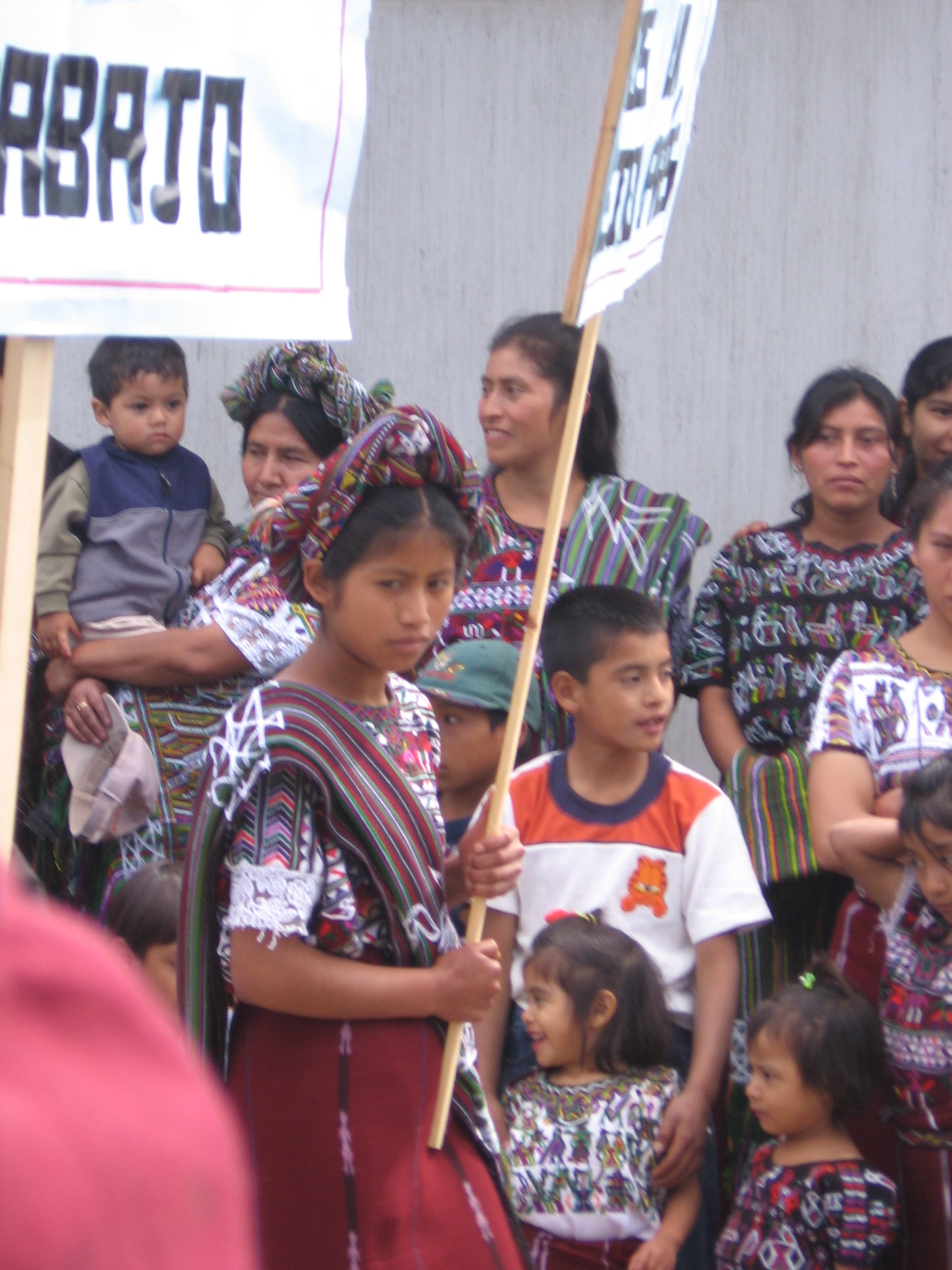Ixil Community on:
[Wikipedia]
[Google]
[Amazon]
 The Ixil Community is a name given to three neighbouring towns in the
The Ixil Community is a name given to three neighbouring towns in the
 During the
During the
Quiché department
Quiché () is a department of Guatemala. It is in the heartland of the K'iche' (Quiché) people, to the north-west of Guatemala City. The capital is Santa Cruz del Quiché. The word K'iche comes from the language of the same name, which means " ...
in the western highlands of Guatemala
Guatemala ( ; ), officially the Republic of Guatemala ( es, República de Guatemala, links=no), is a country in Central America. It is bordered to the north and west by Mexico; to the northeast by Belize and the Caribbean; to the east by H ...
. These towns are Santa Maria Nebaj
Santa Maria Nebaj (; usually abbreviated to Nebaj) is a town and municipality in the Guatemalan department of El Quiché. Santa Maria Nebaj is part of the Ixil Community, along with San Juan Cotzal and San Gaspar Chajul. Native residents spe ...
, San Juan Cotzal
San Juan Cotzal () is a town and municipality in the Guatemalan department of El Quiché. San Juan Cotzal is part of the Ixil Community, along with Santa Maria Nebaj and San Gaspar Chajul.
History
Pre-Hispanic era
Worried about the defec ...
, and San Gaspar Chajul. The area's population is predominantly of Ixil descent. When viewed on a map, the three Ixil towns appear to form a triangle, because of this, the Guatemalan military used the term Ixil Triangle when planning its campaigns in this region. Although the term "Ixil Triangle" has been used in some popular handbooks., most people in the region, as well as scholars and indigenous rights activists, avoid using this term as it reproduces the military "gaze", and instead prefer "Ixil region" or "Ixil community."
Culture
Due to its location in the Cuchumatanes mountains, the Ixil Community has remained isolated from the rest of the world. Its people have therefore maintained their traditional culture — free from influences of the outside world. Although the introduction modern western media is rapidly eroding the culture as young men and women look North for economic prosperity and abandonment of the culture and language are present problems. Most men are farmers, and most women are weavers. Their diet primarily consists of maize based products. Small round tortillas or corn dumplings known as tamalitos are a staple at almost every meal. This love of corn is ingrained in the culture, so much so that many of the Ixil refer to themselves as "men of corn". Stating that the first humans were rolled from masa or ground up maize. Other foods commonly eaten are , which are small corn dumplings steamed in squash leaves covered in chili sauce. Malanga, "güisquil" (pronounced "wiskil": many know it as "chayote"), beans, squash, and eggs make up the rest of their typical diet. The people of the Ixil community primarily speak theIxil language
Ixil (''Ixhil'') is a Mayan language spoken in Mexico and Guatemala. It is the primary language of the Ixil people, which mainly comprises the three towns of San Juan Cotzal, Santa Maria Nebaj, and San Gaspar Chajul in the Guatemalan highlands ...
. Some villagers speak Spanish
Spanish might refer to:
* Items from or related to Spain:
**Spaniards are a nation and ethnic group indigenous to Spain
**Spanish language, spoken in Spain and many Latin American countries
**Spanish cuisine
Other places
* Spanish, Ontario, Cana ...
as a secondary language.
Turmoil during civil war
 During the
During the Guatemalan Civil War
The Guatemalan Civil War was a civil war in Guatemala fought from 1960 to 1996 between the government of Guatemala and various leftist rebel groups. The government forces have been condemned for committing genocide against the Maya population ...
, the Guerrilla Army of the Poor
The Guerrilla Army Of The Poor (EGP – ''Ejército Guerrillero de los Pobres'') was a Guatemalan leftist guerrilla movement, which commanded significant support among indigenous Maya people during the Guatemalan Civil War.
Formation
__NOTOC ...
(EGP) used the surrounding mountains as a base of operations. The Guatemalan Army pursued a scorched-earth policy to destroy villages. The villagers of the Ixil Community were caught in the crossfire, and thousands of civilians were killed, tortured, or Forced disappearance, missing.Argueta, Al (2007) p.151
The army's campaign against civilians in this region may have been motivated partially by a desire "to weaken and eventually eradicate Maya culture." Villagers slowly learned not to wear their traditional Maya clothing, because its distinctive appearance made them easy targets for soldiers.
References
External links
{{coord missing, Guatemala Geography of Guatemala Quiché Department